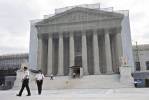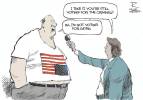Searching Las Vegas tunnels for the truth
Because of its unique and dynamic presence in the world, Las Vegas is the subject of more books than the typical community of its size. The Las Vegas metro population is roughly the same as that of Columbus, Ohio, but you don’t see many authors flocking to the Buckeye State capital in search of best-selling material.
Nonfiction books about Las Vegas commonly come in four flavors:
— Gambling: Tomes of wisdom and mathematics to beat the odds (or at least not lose all your money during your first hour in the casino).
— History: Documenting the city’s past, from John C. Fremont’s brief stop to the Rat Pack era to the rise of the megaresorts.
— Organized crime: All the dirty details — some of them actually true — about Bugsy Siegel, Tony Spilotro and other lovable crooks.
— Photo essays: Artful pix of leggy showgirls, crowded craps tables and neon signs.
Matt O’Brien’s “Beneath the Neon: Life and Death in the Tunnels of Las Vegas” doesn’t fall into any of these categories. It’s a refreshing departure from the usual flavors.
O’Brien, news editor of CityLife, a weekly newspaper owned by the same company as the Review-Journal, has written a book about storm drains. Now, this probably sounds like a boring engineering textbook.
But let me explain.
“Beneath the Neon” isn’t really about storm drains. It’s about the people who live in storm drains. It’s about the couple hundred men and women who call these tunnels home for months, sometimes years at a stretch.
I bet you didn’t realize that a percentage of the valley’s homeless population lives underground. They set up camps within the hundreds of miles of flood control channels coursing beneath the community. They sleep on mattresses, cook meals on camp stoves, entertain the occasional guest. They also swallow, smoke and inject illegal drugs.
O’Brien showed a lot of bravery and not a little foolhardiness in researching the book. Time and again, he walked into the mouth of an unfamiliar storm drain, not knowing what he might encounter. He could have been grabbed, beaten up, robbed, knifed.
He could have gotten lost as he traversed miles of tunnels. If the weather had suddenly turned wet, he could have drowned in a flash flood, as some storm drain residents have over the years.
Fortunately, O’Brien survived to tell his tale — and the poignant stories of the denizens of the dark.
The people he interviews are, almost to a person, willing to tell him how they ended up living underground.
A man named David says, “I’m not stupid. I’m just an alcoholic and a drug addict.” Cary says he’s hooked on crack: “When I get cash in Vegas, I just want to do drugs. It’s a rush. My body starts shaking and I got to have it.”
Gambling problems are a common cause of storm drain tenancy. Ernie, a former jockey, says video poker was his downfall. “Gambling beats drugs any day of the week, but it’s a worse habit in some ways,” he explains. “See, the drug man doesn’t always got what you want and sometimes he’s not at home. But that slot machine — trust me — is there 24 hours a day, seven days a week, and it will always take your money.” Ernie says that when he hits a royal flush, he’s going to leave town.
For most of those O’Brien interviewed, the storm drains offer security, privacy and a break from the heat. A man named Lawrence explains the advantages of his living conditions: “I’m safe down here. It’s peaceful. It’s quiet and cool.”
Eddie adds: “It’s a place you can go every night and know it’s going to be there. Any place else you go, you’re always subject to being booted by the owner or a security guard or having kids wander by and tear your camp apart.”
How do these men and a few women get money? Some work day labor jobs. Some are prostitutes. Others claim credits at casinos. Tourists, apparently, are notorious for walking away with money — credits — still in the machines.
The clever street person takes advantage of these sloppy gamblers. “They’ll leave $80, $90, sometimes $150 in a machine,” Cary says. “They’ll hit a jackpot and leave $400 or $500 behind. They don’t know what the hell they’re doing.”
“Beneath the Neon,” published by Huntington Press, is loaded with these kinds of stories. Without question, O’Brien has spotlighted a dark and previously uncharted corner of Las Vegas — one that the community’s publicists don’t want to talk about.
What’s more, O’Brien has resisted the temptation to turn his book into a tirade about the homeless situation in Las Vegas. He simply documents his experiences and encounters in the storm drains and leaves readers to draw their own conclusions.
O’Brien’s laudable objectivity, however, lets a host of people and institutions in this community off the hook. The underlying message of “Beneath the Neon,” in my mind, is something most of us know: Las Vegas is a tough place to be down and out. As the late UNLV history professor Hal Rothman wrote, Las Vegas “will make you pay for your inability to restrain your desires.”
Las Vegas Mayor Oscar Goodman receives the brunt of the criticism concerning the inadequacy of homeless services here.
But the fact is, he’s only one elected official among many in four urban jurisdictions within this valley of 2 million people. As O’Brien makes clear, the homeless aren’t all concentrated in the city center.
Not everybody living in the storm drains wants the help that could be provided if local governments were aggressively tackling the homeless problem. The rules and hassles of a homeless shelter just aren’t simpatico with some of these iconoclasts. But at least a few of them could be rescued and given a chance for a better life.
Of course, you have to know they are living there first. “Beneath the Neon” accomplishes something most books about Las Vegas do not: It tells us something we didn’t know.
Geoff Schumacher (gschumacher@reviewjournal.com) is Stephens Media’s director of community publications. He is the author of “Sun, Sin & Suburbia: An Essential History of Modern Las Vegas” and, coming in February, “Howard Hughes: Power, Paranoia & Palace Intrigue.” His column appears Sunday.
GEOFF SCHUMACHERMORE COLUMNS

















